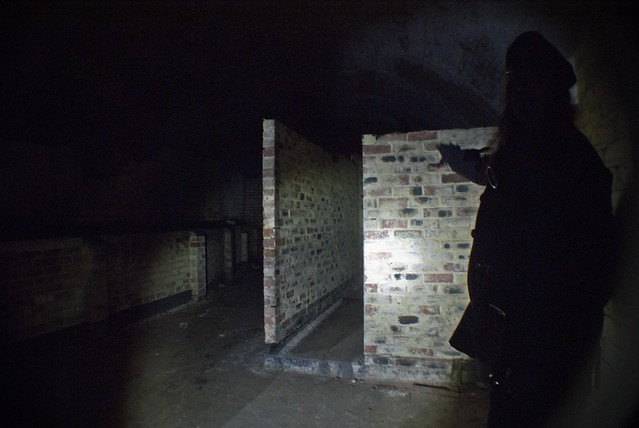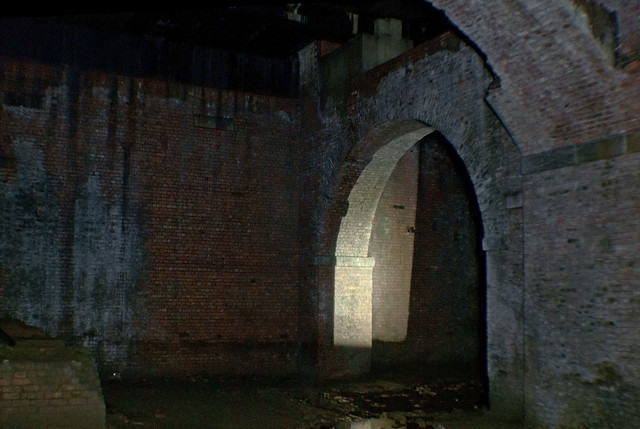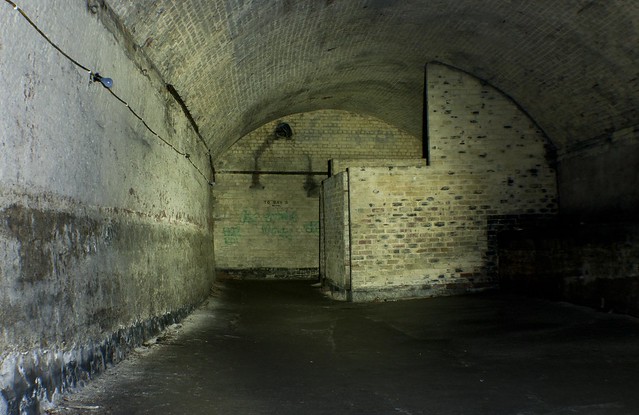The wife has wanted to do a ghost walk for ages and I always wanted to see the Manchester Salford Canal Junction so it was pretty much a perfect compromise.
The walk itself can only be described as Horrible Histories for adults and if you don't have kids chances are you don't have a clue what I mean :D
The host for the evening was brilliant and even if it was sold as a ghost walk it was all very tongue in cheek and more like a comedy show.
He recognised my name from the ticket (yay I'm famous) and offered that after the show finished I could head down for half an hour to get a few extra pics
it was a brilliant night and if you get the chance I fully recommend it

The lack of any direct canal link between the Mersey and Irwell Navigation and the Rochdale Canal meant that goods being transported using both waterways had to be offloaded onto carts and carried across the city, before being loaded back onto boats to continue their journey. This was costly and time-consuming, as well as adding to traffic congestion on the streets of Manchester.
In 1799 the nearby Manchester Bolton & Bury Canal company proposed to connect their canal to the Rochdale canal with an aqueduct across the Mersey and Irwell Navigation. Due mainly to strong objections from the Mersey and Irwell Navigation, who would have suffered a loss of trade, the link was not forthcoming. In 1805, John Nightingale was asked by the Mersey and Irwell Navigation Company to estimate the cost of a canal link between Manchester and Salford.
Nothing would happen until 1836, when John Gilbert was appointed as engineer. In 1838, just as the canal was being built, the Bridgewater Canal Company were completing their Hulme Locks branch canal. This provided an alternative route from the Rochdale Canal to the River Irwell, and cargoes from either direction could navigate onto the Irwell without the need to use the new Junction Canal.
During the war, the canal tunnel was brought back to life as a public air raid shelter. It was divided into bays, each separated by two offset parallel brick wall for protection against blast. The eastern end had been obliterated, but the basins adjoining the Rochdale were not filled in until after the war. Today the only easily accessible traces of the expensive and little used junction canal is the exit to the Irwell, the link with the Rochdale above lock 89. However the tunnel also remains intact although hidden from view. It is now divided into two parts, one part lying beneath the Granada TV studios and the other longer section under the former Great Northern Warehouse.








Like an idiot I totally forgot to take a pic of the winch housings that I walked around twice











































